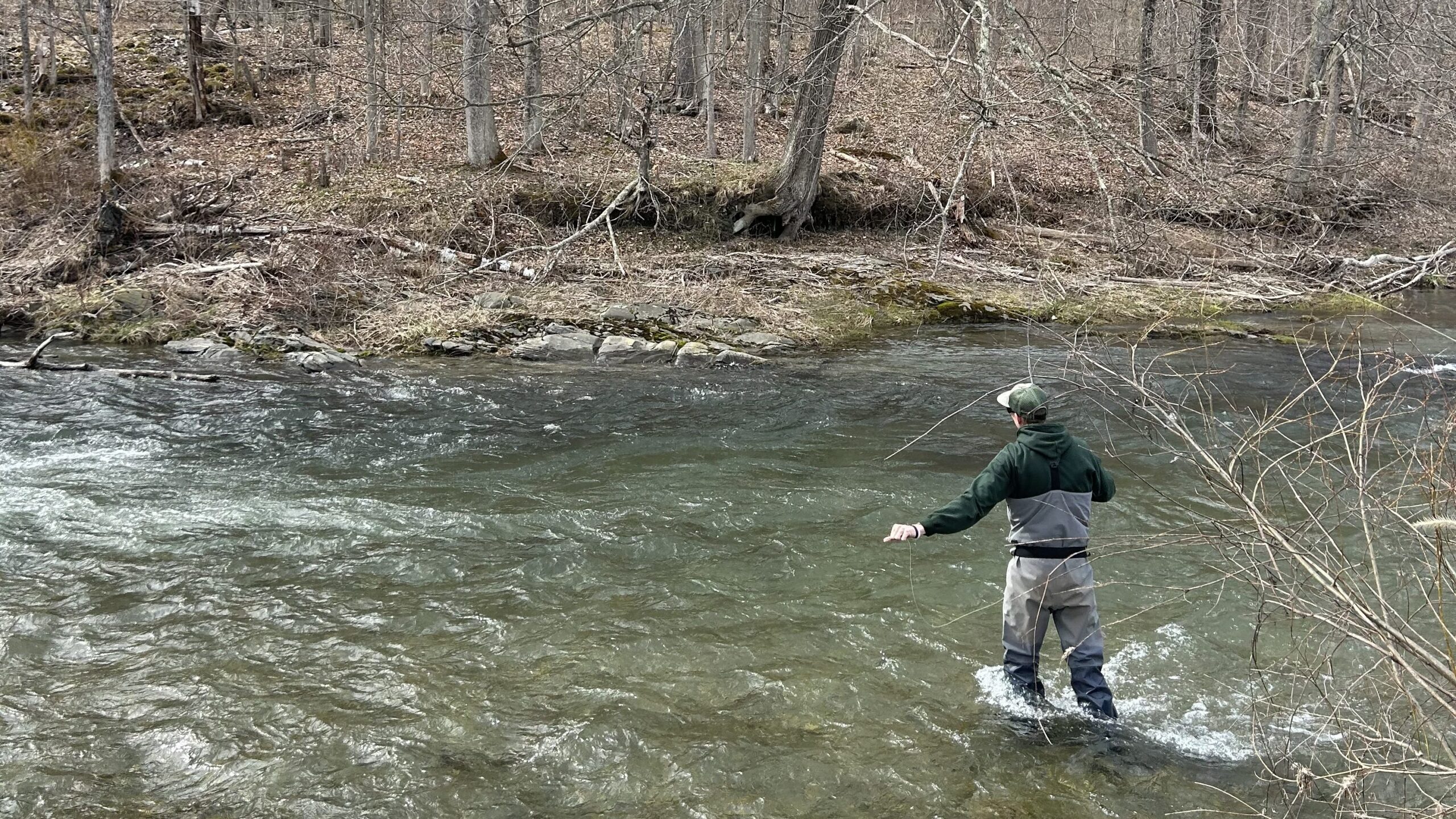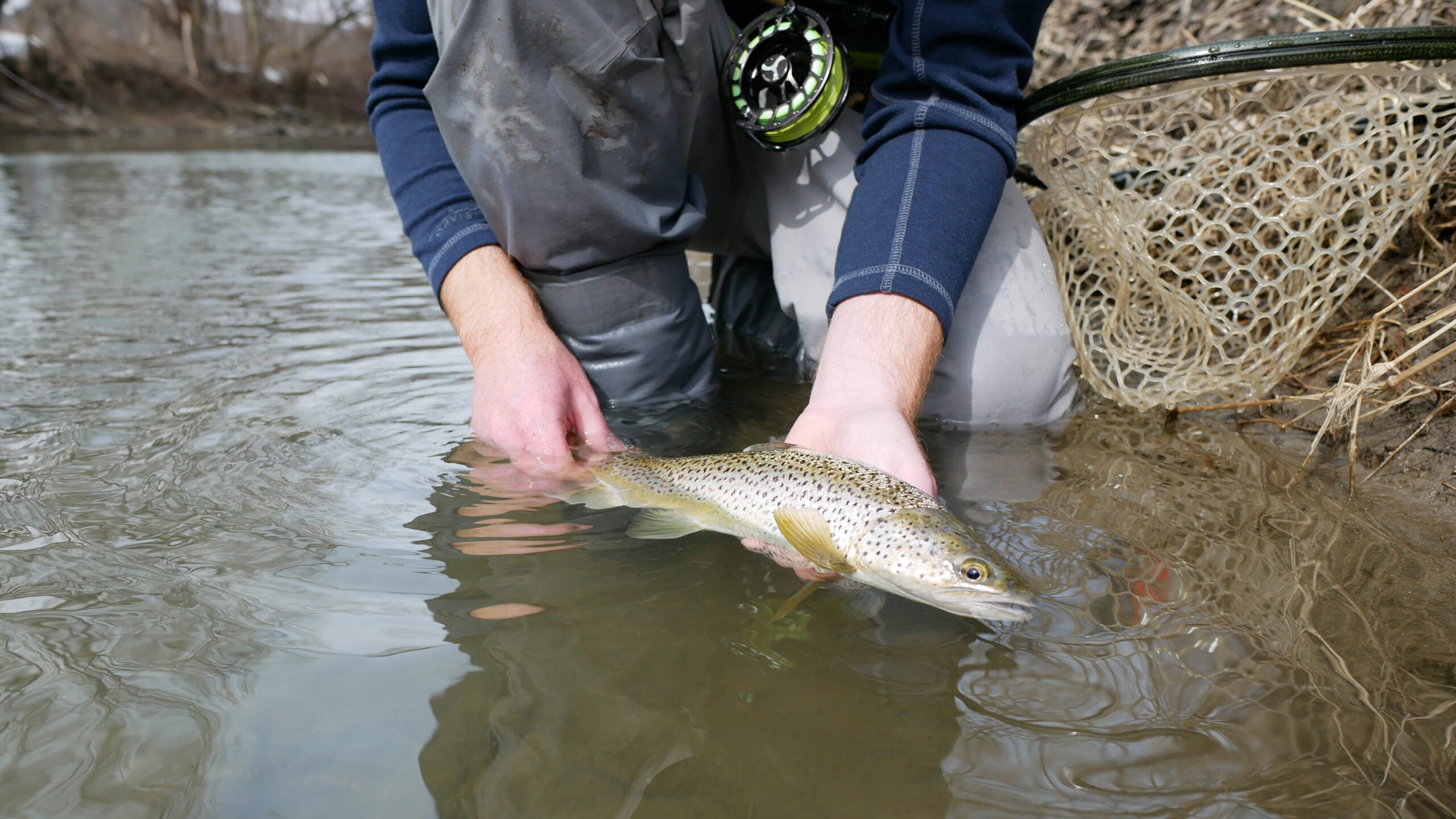
The trout rivers of Southern Vermont, particularly the Battenkill River, are some of the most cherished waters for fly fishing in New England. However, early-season fly fishing on these rivers presents a unique set of challenges. Success often depends on the delicate alignment of natural conditions—where snowmelt, spring rains, cold water temperatures, and the timing of the first insect hatches all come together to create or hinder angling opportunities.
The Stars of Mother Nature
Early spring is a transitional period across Southern Vermont’s rivers, with variable weather patterns and fluctuating conditions. Melting snow raises water levels and often brings discoloration from runoff, while sporadic rains can alter water clarity overnight. Cold water and air temperatures keep the ecosystem in a state of suspension, delaying peak activity for both trout and insects. This makes early-season fly fishing fishing unpredictable and requires an adaptable approach.
The first hatches of the year, such as black stoneflies and the highly anticipated Hendricksons, are pivotal for dry fly anglers. Their emergence signals the start of surface feeding activity, but the timing is critical. If water temperatures are too cold or river conditions are too volatile, even the most dedicated angler may find themselves waiting for nature to cooperate.
Adapting Your Techniques
When dry fly opportunities are scarce, nymphing becomes the most reliable method. Subsurface presentations, such as stonefly nymphs or pheasant tail patterns, often entice lethargic fish out of their slow-moving lies. Streamer fishing, on the other hand, can be particularly effective in high, stained water. Larger patterns imitating baitfish or sculpins can provoke aggressive strikes from territorial brown trout or rainbows, which are more active in these conditions.

The Hunt for Surface Feeders
For anglers who live for dry fly fishing, early season requires patience, keen observation, and a willingness to hunt. Surface-feeding fish can be hard to find this time of year, but they are often present in sheltered sections of the river, such as back eddies or quieter pools near riffles where insects tend to gather. Spotting subtle rises requires sharp eyes and an understanding of how fish move and feed during these cooler months.
A single rising trout in the early season can feel like a prize, requiring precise casting and thoughtful fly selection. Targeting these fish is a rewarding challenge that pushes anglers to refine their skills and develop a deeper understanding of the river.
The Reward
Fly fishing Southern Vermont’s rivers in early spring is not about numbers; it’s about persistence, adaptation, and quality. Tangling with just one surface-feeding fish after hours of searching can feel like a triumph—a testament to an angler’s patience and connection to these waters. The challenges of early season fishing make the rewards all the sweeter, reaffirming why these rivers remain beloved by those willing to embrace their nuances.
By learning to adapt and work with nature’s rhythm, anglers can turn early-season obstacles into opportunities, finding both adventure and satisfaction in Southern Vermont’s remarkable rivers.
